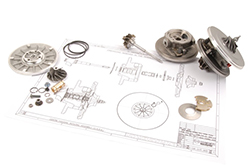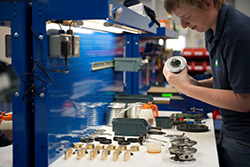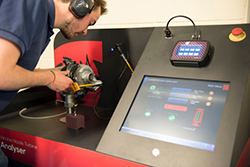
As the global car industry faces increased scrutiny following the Volkswagen emission scandal, there is no doubt that this revelation will have an impact on our market and the future of diesel, but to what extent?
Volkswagen has admitted that it circumvented the emissions control system in over 480,000 2.0-liter diesel vehicles sold in the United States since 2008, to meet strict NOx emission test regulations.
Euro Emission Standards
European emission standards define the acceptable limits for exhaust emissions of new vehicles sold in EU member states and were first introduced in 1992.
Euro 1 (July 1992) Initiated the switch to unleaded petrol and the universal fitting of catalytic converters to petrol cars to reduce carbon monoxide (CO).
Euro 2 (January 1996) Further reduced the limit for CO emissions and introduced different emissions limits for diesel and petrol vehicles.
Euro 3 (January 2000) Added a separate NOx limit for diesel engines and introduced separate Hydrocarbon (HC) and NOx limits for petrol engines.
Euro 4 (January 2005) Concentrated on cleaning up emissions from diesel cars, reducing particulate matter (PM) and oxides of nitrogen (NOx). Some Euro 4 diesel cars were fitted with particulate filters.
Euro 5 (September 2009) Tightened the limits on particulate emissions from diesel engines and all diesel cars needed particulate filters to meet the new requirements. For the first time, a particulates limit was set for petrol engines.
Euro 6 (September 2015) Imposed a significant reduction in NOx emissions from diesel engines (a 67% reduction compared to Euro 5). Also established similar standards for petrol and diesel.
Overall, since Euro 1, PM levels have been reduced by 96% and NOx levels by 87%. To achieve this, new technologies have been developed and adapted to fit vehicle exhaust systems.
Emission Reducing Technologies
Catalytic converters, originally launched in the 1970’s, were designed to clean up CO and HC particulates released as part of the engine combustion process. They react to temperature, converting CO and HC to Carbon Dioxide and water. The reaction depends upon a certain temperature being achieved so they do not work as efficiently in colder
climates.
DPF’s were introduced from January 2005 where diesel particulate levels were reduced to extremely low levels. This reduces the allowable size of PM released to the atmosphere. Reducing the size of PM from the combustion process to this level was not technically possible. This meant all diesel vehicles after September 2009 were fitted with a filter to capture soot and other harmful particles, preventing them entering the atmosphere. A DPF can remove around 85% of the particulates from the exhaust.
To tackle the reduction of NOx, Selective Catalytic Reduction (SCR) systems were introduced in 2010. The SCR system is where Urea (AdBlue) is injected into the exhaust post combustion. In the exhaust, the fluid is converted into ammonia (NH3) which reacts with the NOx in the ‘NOx accumulator,’ breaking the chemical bond and converting NOx into Nitrogen and water. SCR technology alone can achieve NOx reductions by up to 90%, and is one of the most cost-effective and fuel-efficient technologies available to help reduce diesel engine emissions. However, in real world driving conditions, the SCR systems do not work as efficiently and can produce much higher emissions when compared to laboratory testing conditions.
Not over yet…
When the emission levels were set, most engine manufacturers didn’t believe that they were achievable in the set time frames. In the absence of revised levels, the manufacturers have made great progress developing the new DPF and SCR systems. However, the method for testing and proving that the systems do actually achieve the set levels have been flawed; this has allowed manufacturers to achieve the correct levels in lab conditions. But, these do not relate to the actual emissions produced in real world driving conditions. This is now at the heart of the VW scandal.
Find out more about what’s going on in the industry…











